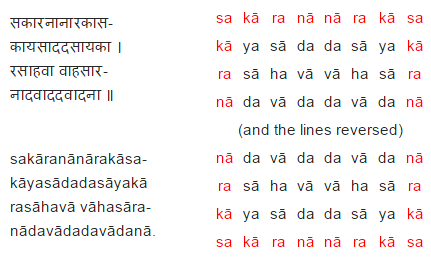The 19th canto of the Sanskrit epic poem Shishupala Vadha is a tour de force of ingenious wordplay, including double meanings, constrained writing, and concrete poetry. The 27th stanza has been called “the most complex and exquisite type of palindrome ever invented” — it produces the same text when read forward, backward, down, or up:

“[That army], which relished battle, contained allies who brought low the bodies and gaits of their various striving enemies, and in it the cries of the best of mounts contended with musical instruments.”
The Babylonian Theodicy is a cuneiform poem of 27 stanzas of 11 lines each. All the sentences in each stanza begin with the same sign, and if these signs are read in order, they produce an acrostic that identifies the author:
a-na-ku sa-ag-gi-il-ki-i-na-am-ub-bi-ib ma-áš-ma-šu ka-ri-bu ša i-li ú šar-ri
“I, Saggil-kīnam-ubbib, the incantation priest, am adorant of the god and the king.”
See also The Star Gauge. (Thanks, Sujan.)
